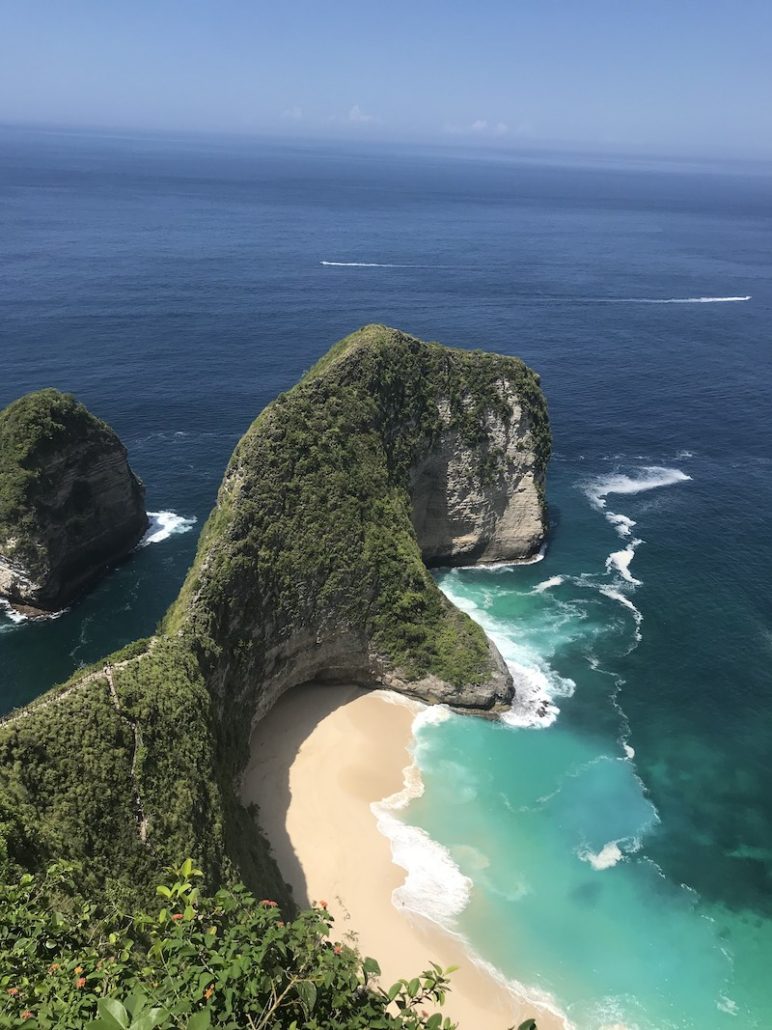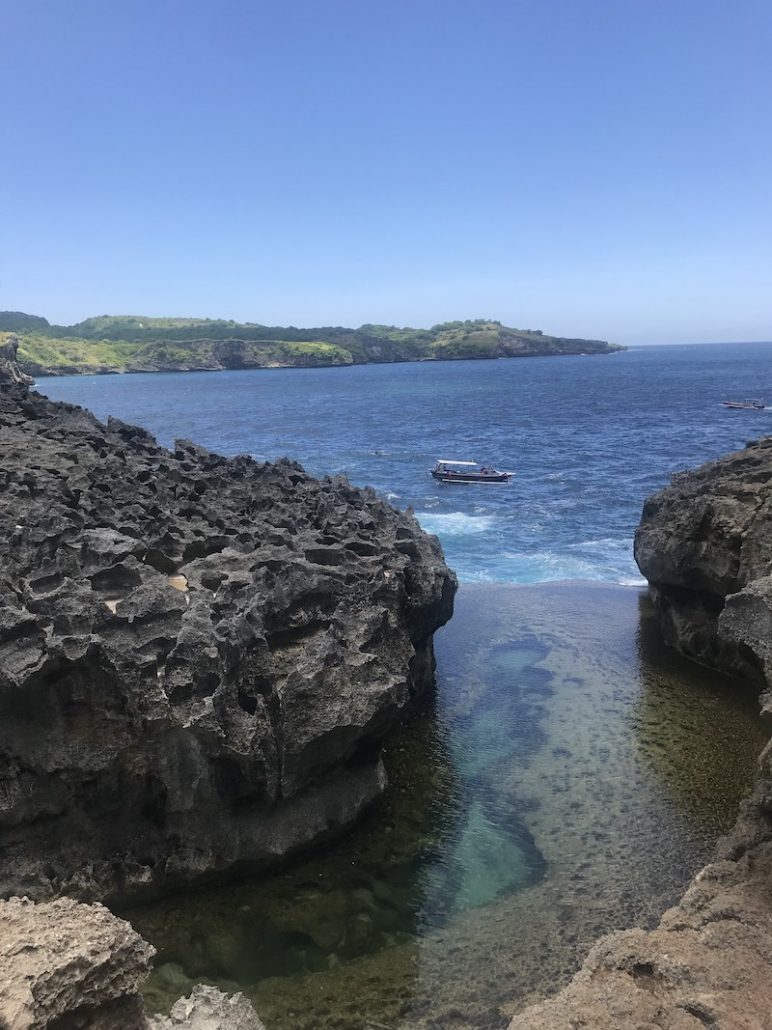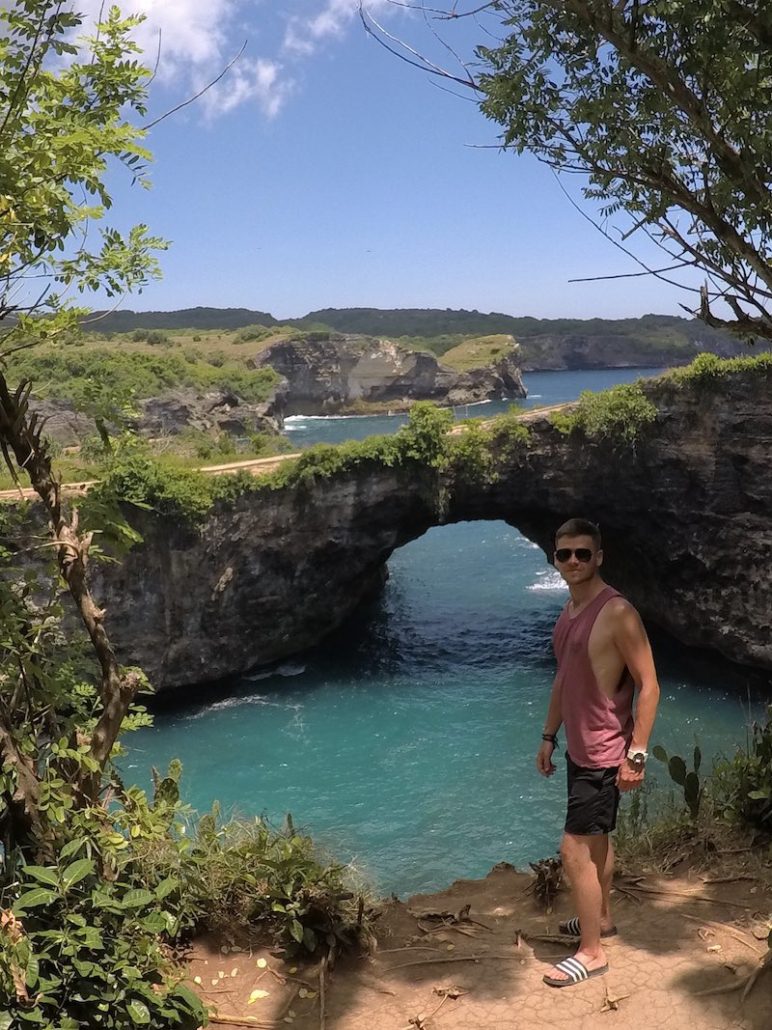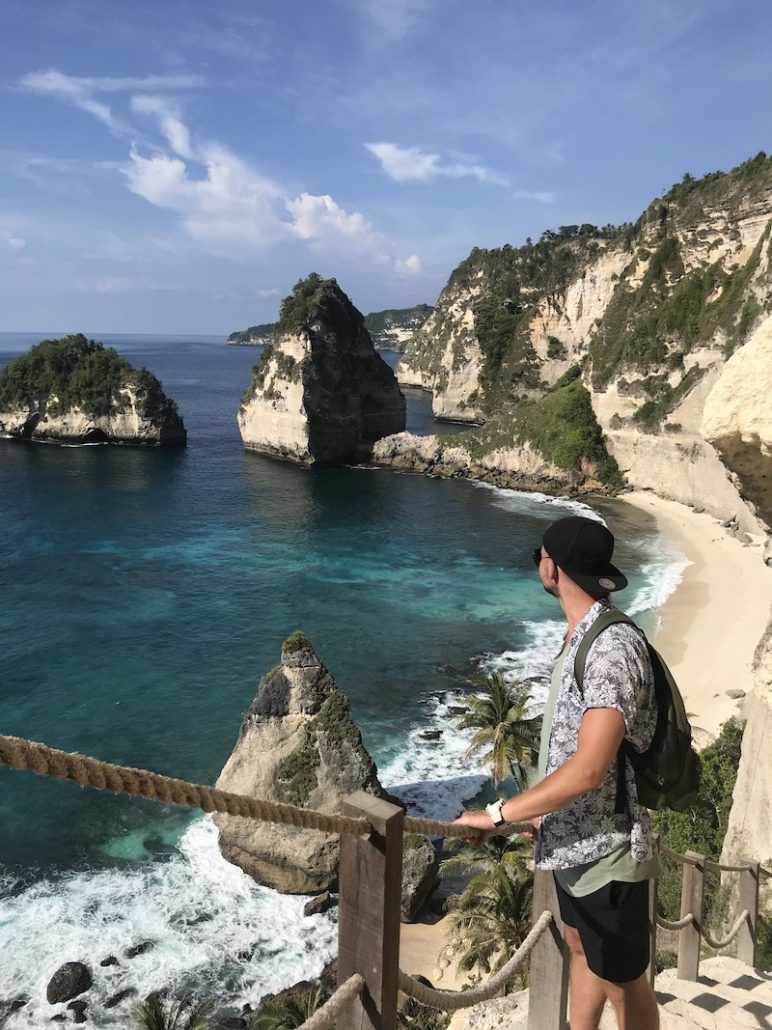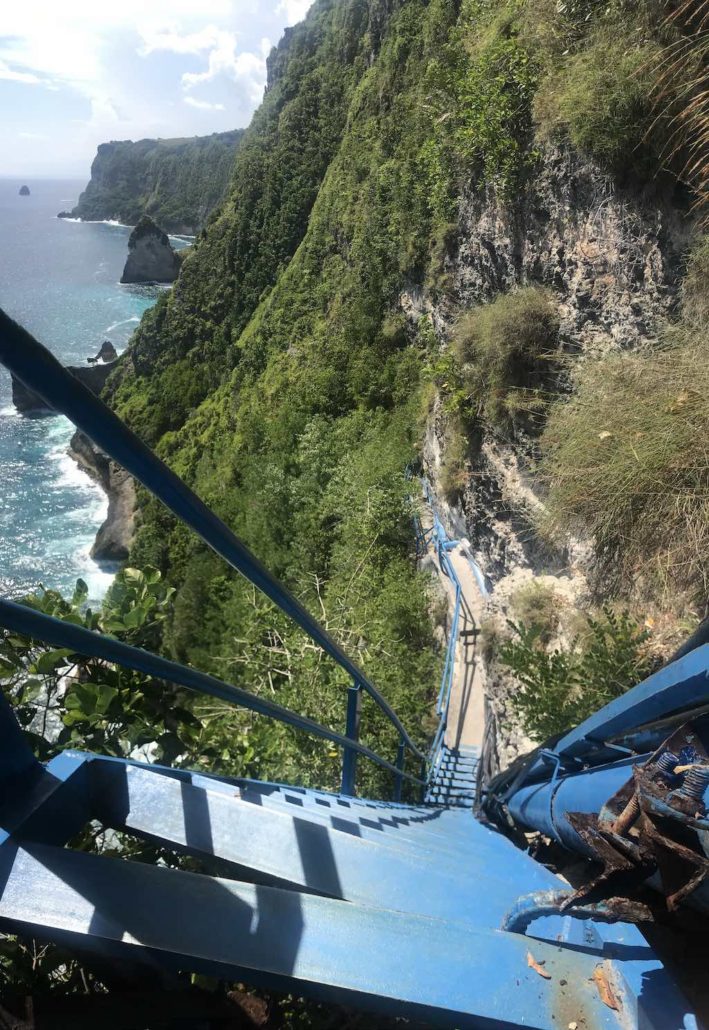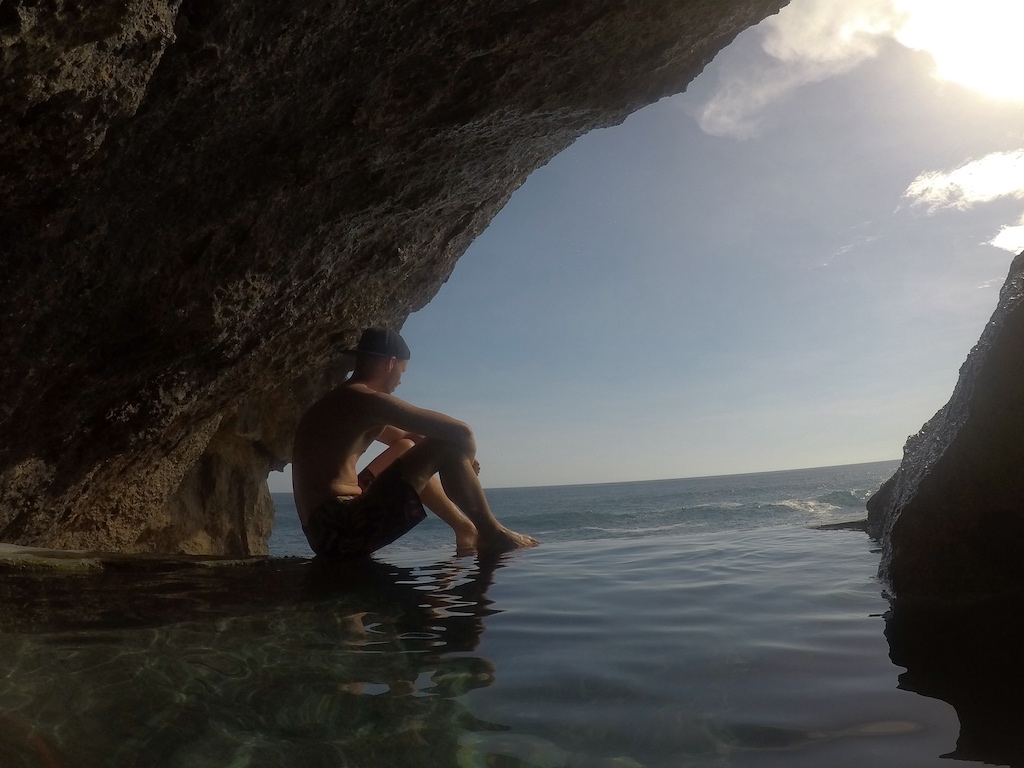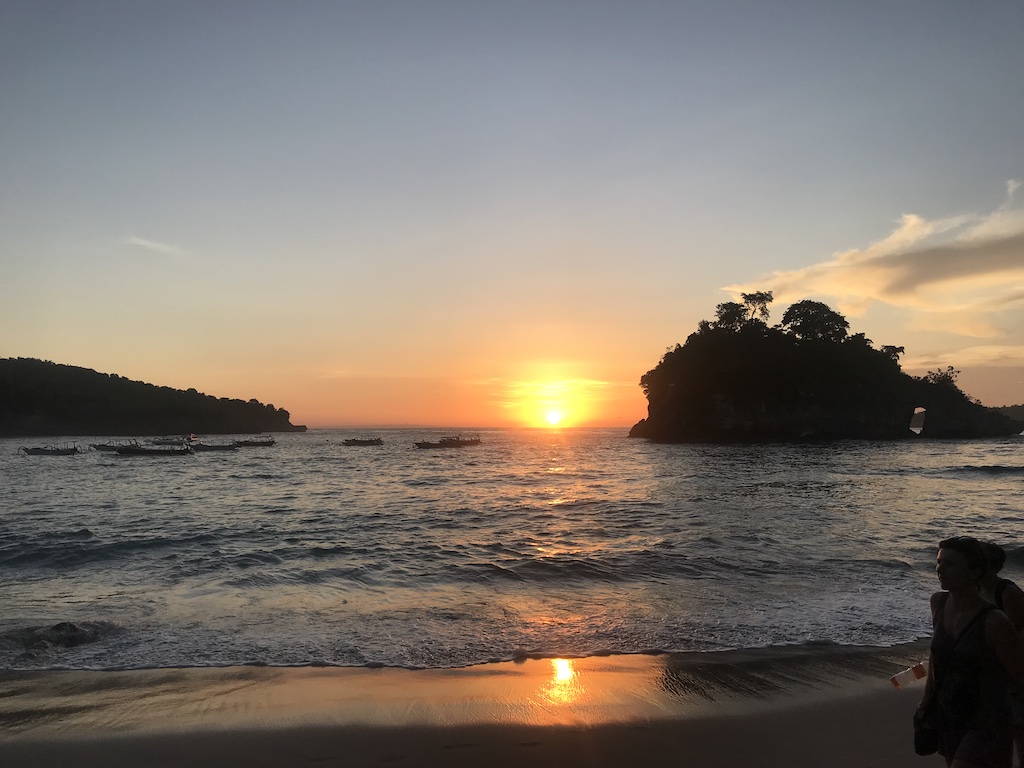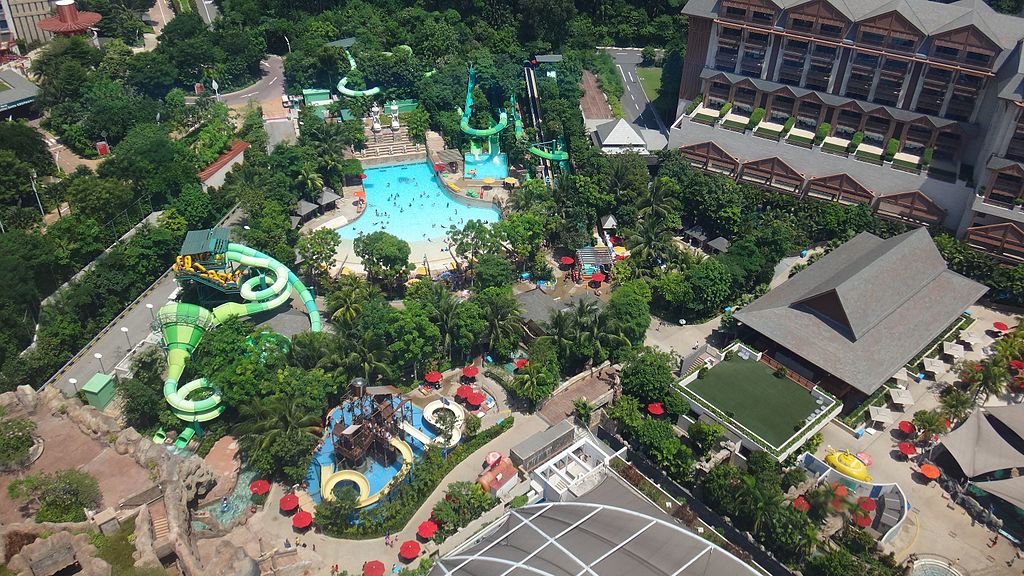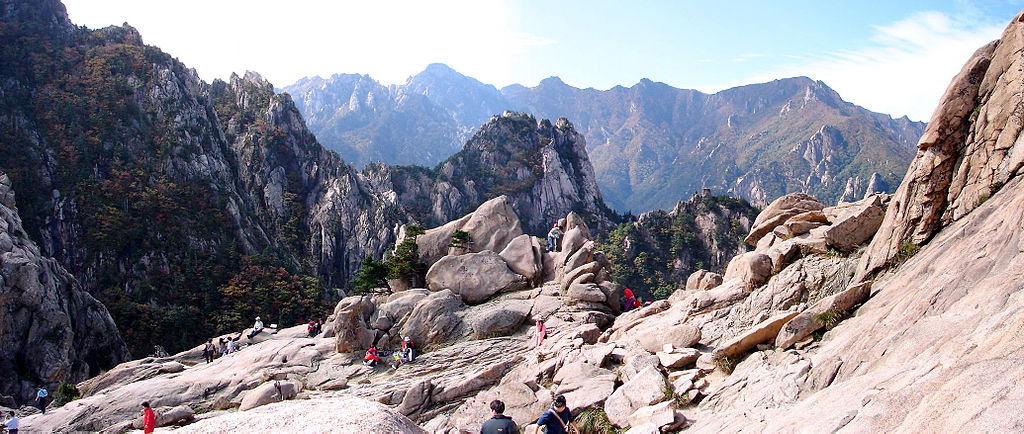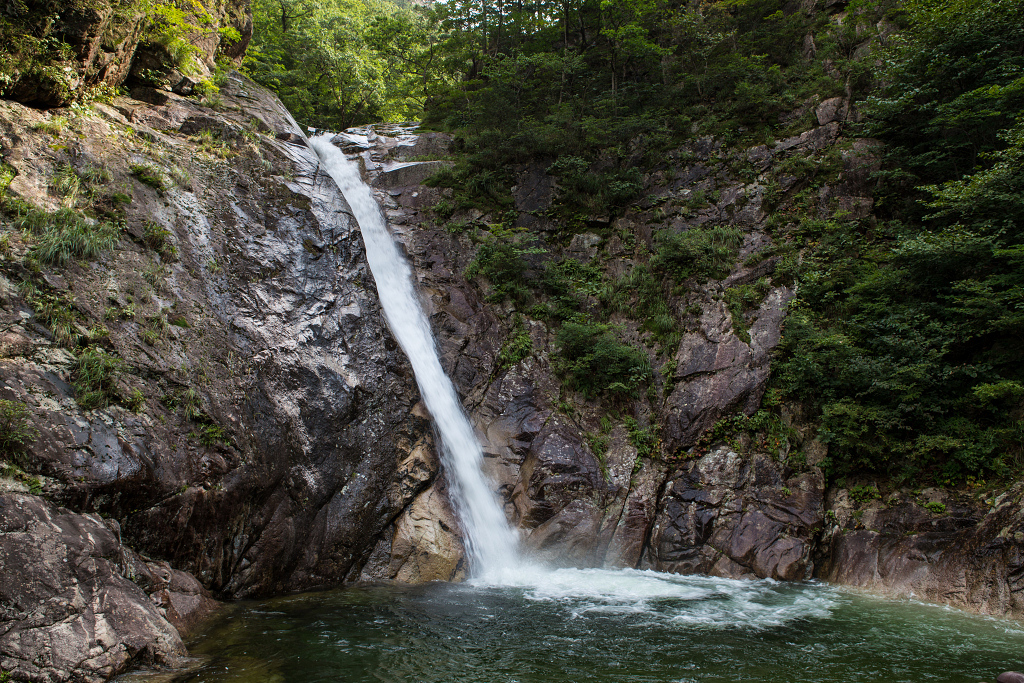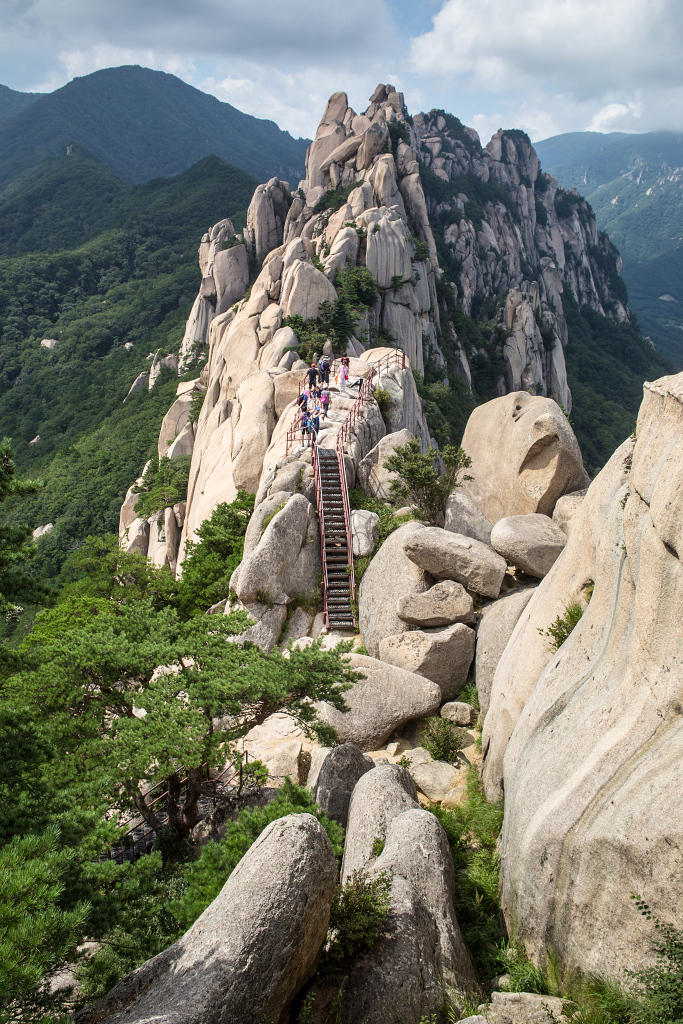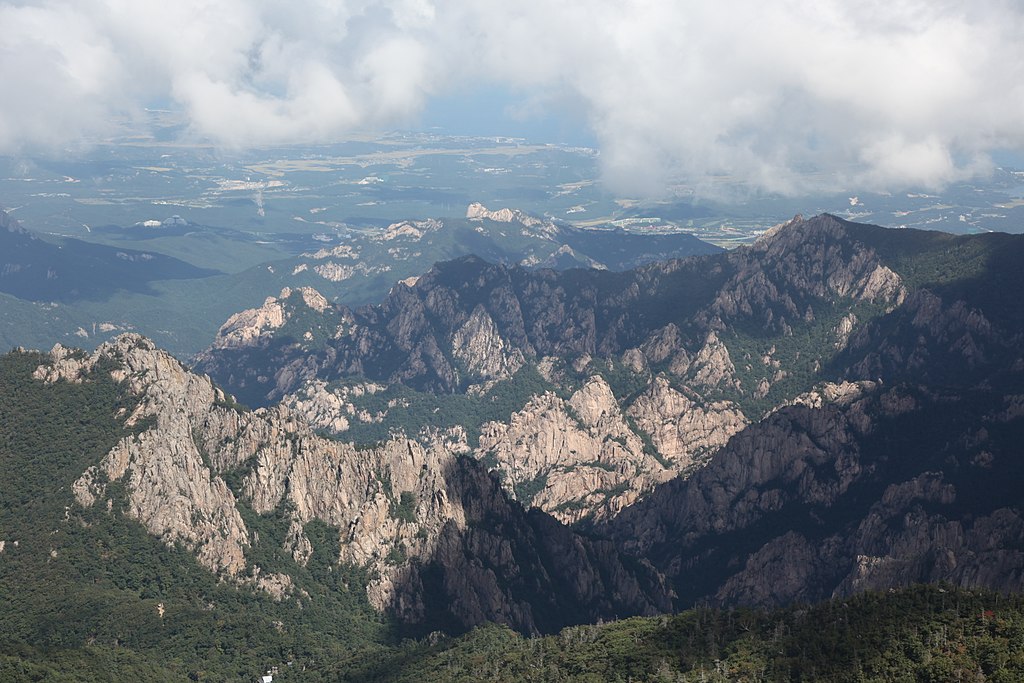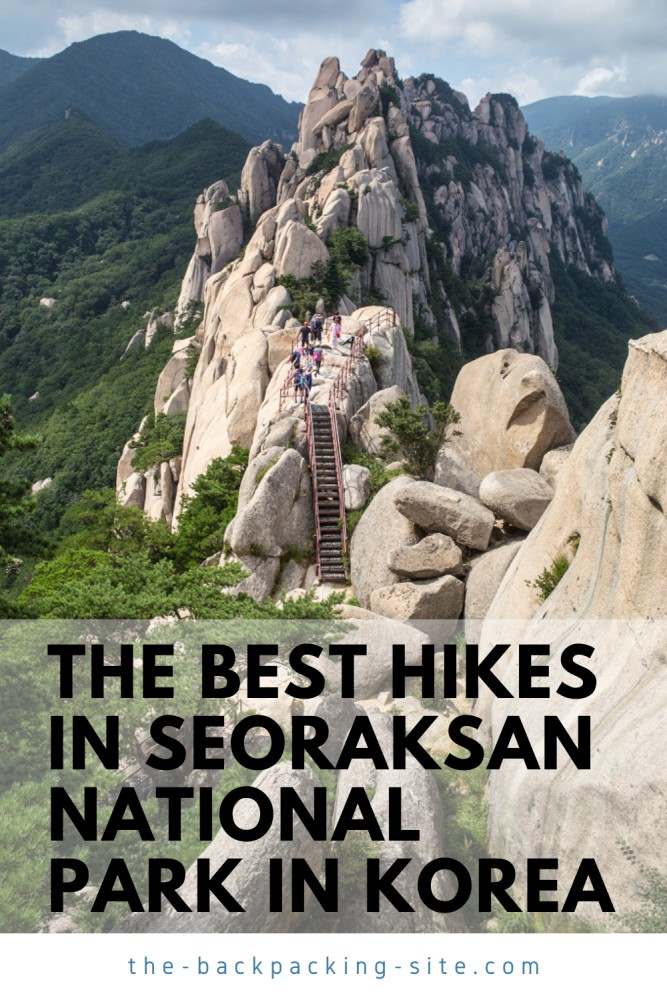If you’re planning a trip to Thailand, you’ve probably heard all about Chiang Mai from other travelers – it’s often one of the favorite stops on their Thailand itinerary!
One of the most popular things to do in Northern Thailand is a Doi Inthanon Day Trip. This beautiful national park is just a 90-minute drive from Chiang Mai and perfect for a 1-day visit.
Doi Inthanon National Park, part of the Himalayan mountain range is famous for being the highest point in Thailand. Even locals flock there to see “snow” (known as frost to those of us who know what real snow is).
Figuring out the logistics of visiting Doi Inthanon on a day trip might seem daunting – that’s what I’m here for!
I visited Doi Inthanon during my first visit to Chiang Mai as a solo backpacker. Spending a day exploring the park is one of the reasons why I fell in love with Chiang Mai and decided to live here part-time.
So, if you want to experience the magic of Doi Inthanon, you’re in the right place. We’ll dive into everything you need to know for a successful day trip, including the easiest ways to get there and what to do when you’re there.
Is a Doi Inthanon Day Trip Worth It?
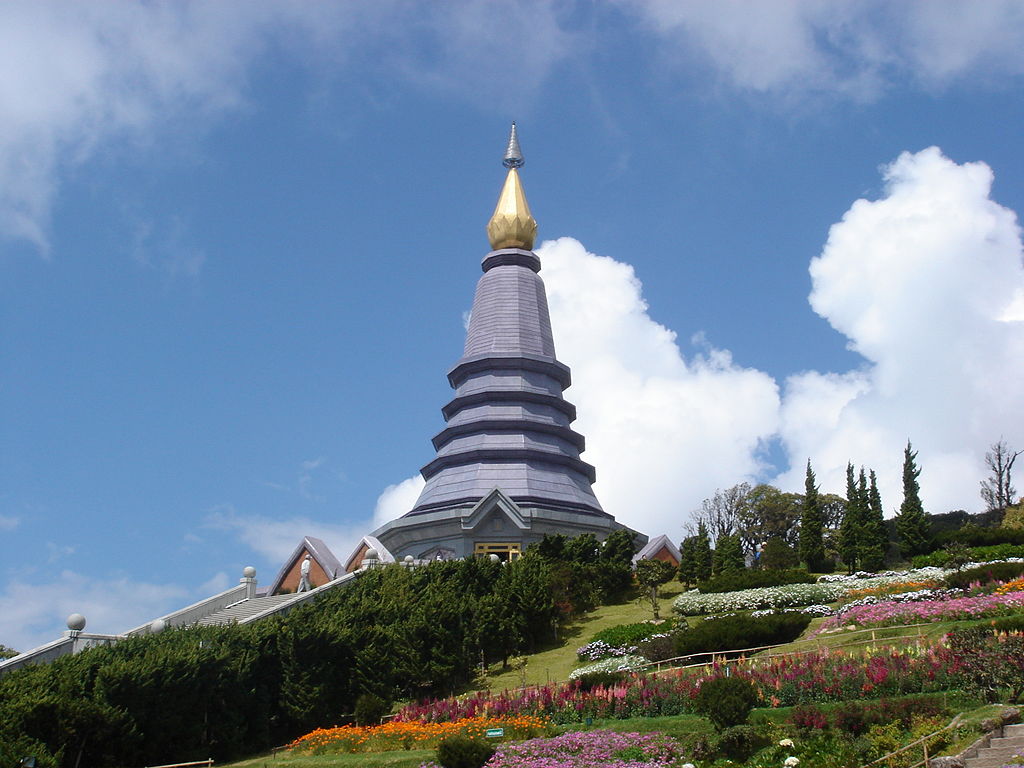
Doi Inthanon
If you’re a fan of waterfalls, surrounded by lush forests, and are wondering whether a Doi Inthanon day trip is worth your time, let me assure you—it absolutely is!
There’s a good reason why it’s one of the most popular day trips from Chiang Mai. The beauty of this national park is condensed into a day’s adventure, making it perfect for those tight on time—something I completely understand.
While a day trip to Doi Inthanon is a bit of a commitment, the experience is undeniably worthwhile. You can see a lot in a day!
Now, if you’re expecting a challenging hike, this might not be it. The main trail, while offering stunning views, is not overly difficult. One popular trail is a wooden pathway, not a dirt trail. However, with the elevation and some incline, you’ll definitely find yourself catching your breath at certain points.
Recommended Doi Inthanon Day Trip Tours
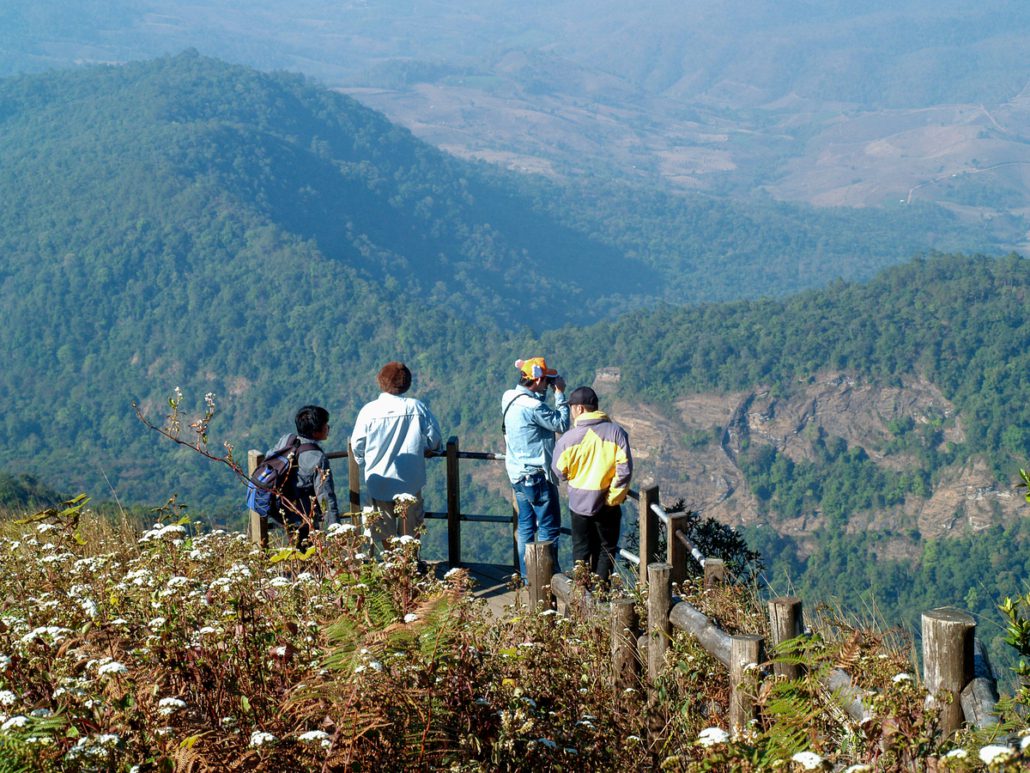
Take in the views on the Nature Trails in Doi Inthanon
While I usually prefer to visit national parks on my own, Doi Inthanon is an exception since there are no good options for public transportation.
I opted for a Doi Inthanon day tour during my first visit because I was still a new scooter rider and didn’t think it smart to take the curvy roads alone. Going with a tour meant I could relax and let someone else handle the logistics.
These tours are excellent value, providing pick-up and drop-off from your hotel. They include additional stops beyond Doi Inthanon, ensuring you maximize your time exploring the surrounding area. And the entrance fee to Doi Inthanon, as well as lunch, is already included.
But if you’re comfortable on a motorbike or want to rent a car, those options work, too! We’ll cover more ways to get to Doi Inthanon below.
Doi Inthanon National Park Group Tour: After getting picked up between 8-9 am, this tour includes visiting the stunning Wachiratharn Waterfall, the Twin Pagodas, Tribe Village, Hmong Market, and a tasty lunch. Perfect for those who want to experience the park without extensive trekking. This is the tour I did
Doi Inthanon Day Trip with Trek and Swim: Ideal for adventure-seekers, this tour begins around 7-8 am, featuring a trek to a hidden waterfall where swimming is permitted. Explore the Karen Hill tribe, witness traditional crafts, and savor Chiang Mai’s finest coffee. You’ll hike over 4km, so wear comfy shoes.
Private Day Trip to Doi Inthanon: A personalized private tour for small groups, this private tour allows you to explore at your own pace. Highlights include Wachirathan Falls, Pha Dok Seaw Waterfall, and interaction with the Ban Mae Klang Luang tribe.
Private Sunrise Doi Inthanon Hiking Tour: This private tour offers a tranquil sunrise experience for early birds. Explore cascading waterfalls, verdant rice paddies, and a vibrant flower garden, concluding with local coffee and a satisfying lunch.
How to Get to Doi Inthanon from Chiang Mai Without a Tour
Navigating your way to Doi Inthanon without a tour offers a sense of adventure, and there are several options to consider:
- Book a tour
- Rent a car or motorbike
- Hire a taxi or private Songthaew for the day
- Public Songthaew (Not Recommended)
While I still believe joining a tour group is convenient for visiting Doi Inthanon and nearby places, I completely understand the appeal of exploring independently.
Keep in mind that you’ll need to pay the park entrance, parking, and guide fees (some trails require a guide)—more on the fees below.
Being more at ease riding a motorbike now, I look forward to the freedom and flexibility it offers for my next visit. Motorbike rentals are cheap in Chiang Mai, but only recommended for experienced and insured travelers.
Renting a car is more practical for 2 or more people, and the drive only takes about 90 minutes. While the roads are windy and Thai drivers can be wild, the drive isn’t too difficult, so long as you’re comfortable on the left side of the road.
Hiring a taxi for the day is a convenient choice, though remember to negotiate the fare. If you can get a taxi for around 3,500 baht, that’s a fair price.
Hiring a private Songthaew truck for the day is cheaper, around 2,500-3,000 baht. It’s not as comfortable as a car, but it fits more people.
While some intrepid travelers opt for the Songthaew (shared taxi) as a public transport option, it’s worth noting that this journey involves a transfer and takes a considerable 2.5-3 hours one way, dropping you off 22 km from the park’s main entrance. Inside the park, distances aren’t easily walkable, making a vehicle essential.
Doi Inthanon Entrance Details
Gates open at 5:30 am and close at dusk
Upon reaching the park, entrance fees apply—300 baht for foreign adults and 150 baht for children aged 3-14.
While some of the short trails can be explored on your own, the majority of trails require that you hire a local guide (only 200 baht).
If you want to enter the Twin Pagodas, you’ll pay an additional 100 baht per person (or do what I did and just take pictures from outside).
Additional fees for cars and bikes are 30 baht and 20 baht, respectively.
Things to See on Your Doi Inthanon Day Trip
There’s a lot to see on your day trip to Doi Inthanon!
Begin your journey at the Summit, standing proudly at 2,565 meters—the highest point in Thailand and the best place to see the sunrise. The panoramic views of mountains and the Two Chedis are nothing short of mesmerizing, and don’t forget to capture the moment with the iconic “Highest Point in Thailand” sign.
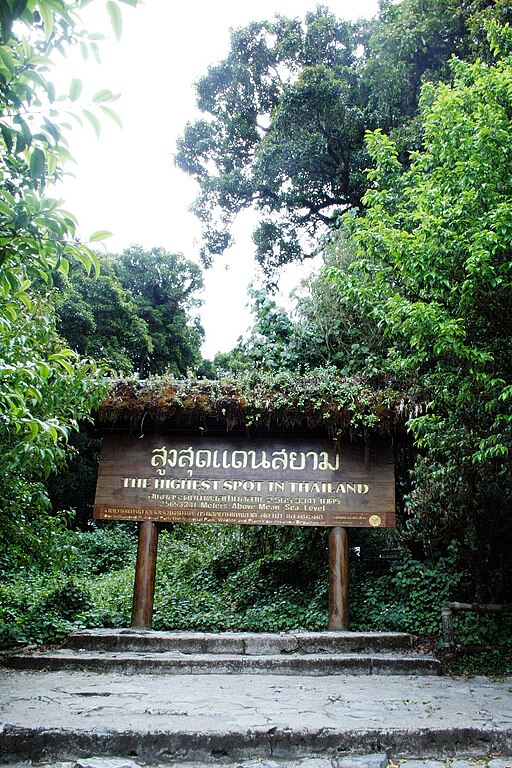
Highest Point in Thailand sign at Doi Inthanon
For a gentle immersion into the park’s unique flora and fauna, venture along the Ang Ka Luang Nature Trail—a short, 400m wooden boardwalk perfect for families and nature.
The main trail, Kew Mae Pan Nature Trail, stretches over 3km and offers one of Thailand’s most breathtaking panoramic views. It’s closed from June to October for forest recovery.
No Doi Inthanon day trip is complete without paying homage to the Two Chedis (Twin Pagodas). Built to commemorate the 60th birthdays of King Bhumibol and Queen Sirikit, this site is particularly popular at sunset. Entrance to the pagodas requires an additional 100 baht per person.
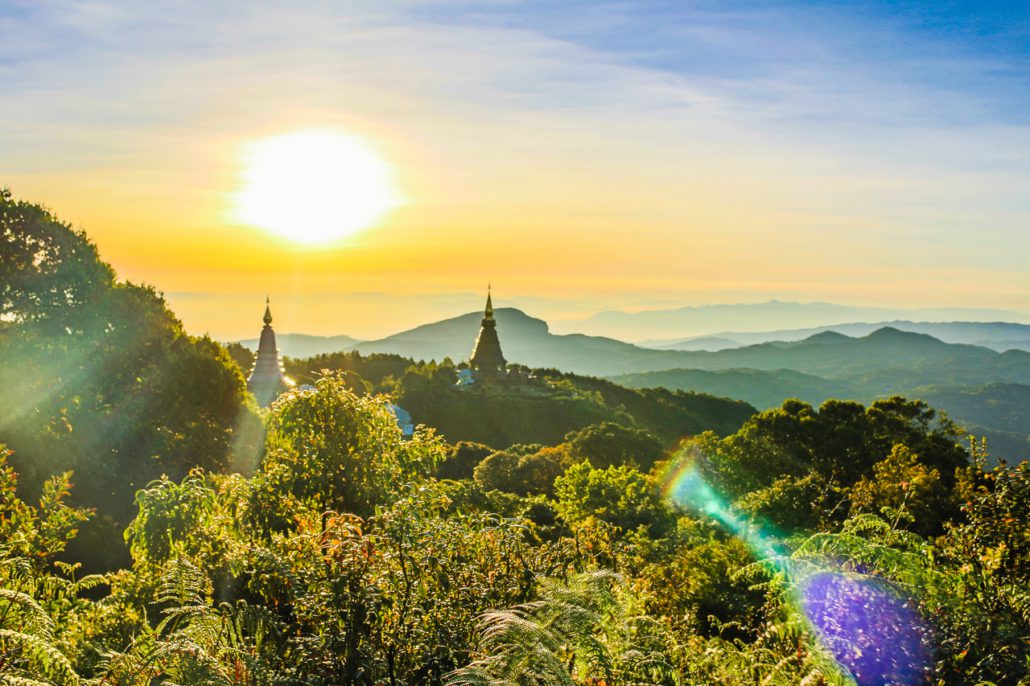
Sunset with the Two Pagodas at Doi Inthanon
Immerse yourself in the majestic beauty of Wachirathan Waterfall, easily accessible and showcases cascading falls in all their glory, especially during the rainy season. Sirithan Waterfall, with its intricate rock formations and lush surroundings, is another gem waiting to be discovered.
Take a scenic 3 km walk downhill to Pha Dok Siew Waterfall and the Mae Klang Luang Village, home to the S’gaw subgroup of the Karen people. Here, you’ll encounter an authentic Thai agricultural experience and the charm of the Somsak Coffee Shop. Arrange for your driver to pick you up at this tranquil village so you don’t have to backtrack.
Cap off your adventure with a visit to Brichinda Cave—a fitting conclusion to a day filled with the beauty of Doi Inthanon National Park.
Best Time for Your Doi Inthanon Day Trip
While Doi Inthanon is accessible year-round, the dry season from December to April is the most popular. Keep in mind that this is also the busiest time to visit, especially for locals who want to experience cooler temperatures.
December and national holidays get very crowded.
From May to November, the wet season brings fewer crowds and lush waterfalls.
I don’t recommend visiting during the burning season, which usually peaks February-April, or you’ll be dealing with poor air quality and unimpressive views.
Conclusion: Planning Your Doi Inthanon Day Trip
If you have time in your Chiang Mai itinerary, visiting Doi Inthanon National Park on a day trip is a great way to experience the famous landscapes of Northern Thailand.
I visited Doi Inthanon during my solo backpacking trip to Chiang Mai, and it undoubtedly played a part in why I keep coming back.
For those considering tours, I recommend them for their convenience, particularly for solo travelers and travelers with limited time.
For the adventurous souls planning independent travel, I’ve outlined alternative ways to reach Doi Inthanon, from renting a car or motorbike to hiring a taxi or a private Songthaew. While tours provide ease, independent travel provides freedom and flexibility.
As you plan your day, don’t miss the key attractions within Doi Inthanon, from the highest point summit and nature trails to waterfalls and cultural stops like the Twin Pagodas. Remember to dress appropriately for the altitude (it gets cold up there), wear bug spray, and stay hydrated.
For more incredible hikes and adventures in Thailand, check out other fantastic hiking opportunities. Your journey to Doi Inthanon is just the beginning of what Thailand offers!

